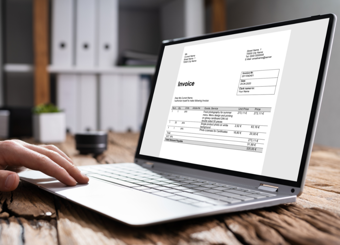4 ways to become a signatory to the Fair Payment Charter
Created for the UK in 2008, The Prompt Payment Code (PPC) sets out guidelines and standards for payment practices, encouraging businesses to pay suppliers on time, whilst giving clear guidance and support on how to meet and maintain the stated standards. Last year, the Government set up a new advisory board to further reinforce the code of conduct to shame the bad, showcase the good and urge more companies to follow suit. The Code is administered by the Institute of Credit Management (ICM) on behalf of the Department for Business Innovation & Skills (BIS).
According to the Department for Business Innovation & Skills, “It is estimated that more than half of all UK business transactions take place with no pre-agreed payment terms and the code (Prompt Payment Code) works to combat this.”
So what does the Prompt Payment Code mean for the Construction Sector?
By complying to the PPC, construction companies can apply to become a signatory to the Construction Supply Chain Payment Charter (also known as the Fair Payment Charter) – which is the construction sector’s own commitment to faster, punctual payments to subcontractors and suppliers within fair and clearly defined time limits. By complying with the Charter not only does it promise construction firms real commercial relief for their valued suppliers, but significantly, also gives negotiation room for more favorable pricing in return. From a marketing point of view, the Fair Payment Charter logo, can be used on stationery and promotional materials, helping boost brand image and good will within the industry.
‘Our ambition for 2025 is that the construction industry’s standard payment terms are 30 days and that retentions are no longer withheld.’ Department for Business, Energy and Industrial Strategy
However, with signing up to the Charter comes some challenges to firms in the Construction industry. Compared with companies in other sectors across the UK economy, construction firms tend to be relatively undercapitalized due to their tendency of having a much higher proportion of trade creditors and outstanding customer payments on their books, meaning that complying with the Charter could see more stress on financial liquidity, as payments to suppliers are made, regardless of any incoming revenue delays. The problem is magnified in that many construction companies are still using legacy or even paper-based procurement systems and processes. Often they rely too heavily on error-prone manual processes to raise purchase orders, receipt goods and services when delivered, and process invoices for payment.
4 steps to compliance
Currently only around 20 construction companies are signed up to the Fair Payment Charter, which may come as little surprise given the financial and administrative positions many firms find themselves in, and the spend control, compliance and visibility required to comply. However, there is a way construction firms can look to take advantage of the commercial and reputational benefits offered by the Charter. Take a look at our 4 steps guide:
1. Centralize and standardize processing and reporting
This is especially important for businesses that have different procurement systems and processes in place across multiple sites, often a cause for unnecessary payment delays. With a centralized function that records and tracks all payment activities, a company will collaborate more effectively with suppliers and auditors alike. Organizations can also establish standard policy and best practices such as maximum timeframes on payments. By centralizing and standardizing both processes and systems it should ensure more efficiency, from requisition through to payment with less resource required to complete each payment-related task.
2. Automate the process
With the right solution you can improve compliance by reducing the need for manual processing. For example, with the right Purchase to Pay (P2P) procurement system you can ensure all communications with suppliers are accurate and on time. When a requisition is raised, the system will automatically request approval from the relevant person/group, which will then generate an electronic purchase order (PO) upon approval.
When the supplier submits their invoice, the system will scan the invoice for the PO and the Goods Receipt Notice (GRN) to see if there is a ‘3-way match’. Once the quantities, price, and terms are validated, the invoice can be processed for payment with virtually no manual intervention.
3. Set up supplier portals
To ensure supplier product catalogs, supplier information, insurance documents and certifications are always up to date, a self-service supplier portal enables suppliers to manage their own profile, freeing up your procurement team to pursue more strategic objectives, rather than regularly re-inventing the wheel asking for supplier information on an ad-hoc basis. Suppliers can also track their order status via the portal which can help eliminate errors and minimize the impact of product shortages or changes of delivery schedules.
4. Collaborate and communicate with suppliers
Although a Purchase to Pay system will give you a great platform to make prompt payments, it is optimistic to expect that all suppliers will adhere to the 3-way match principles straight away. That’s where effective communication comes into play. Make sure you communicate the process with your suppliers, so they know the rules of invoicing to ensure they are paid on time. You can also set up automated rules within your Purchase to Pay system to detect any errors or mismatches, stopping the transaction taking place and flagging the problem to your suppliers and procurement team.
The invoice will then be returned to the suppliers for correction if necessary, without any need for manual intervention. By communicating the invoicing rules upfront and the invoicing errors as they happen, you can speed up payment processes whilst eliminating errors that often lead to delays. By complying with the charter, not only will your business be able to address the payment problem, but you can also enjoy reduced cost, improved efficiencies, better supplier relationships, and mitigate supplier risk.






